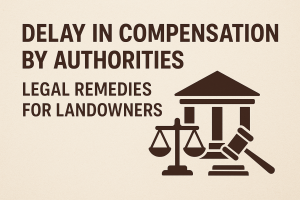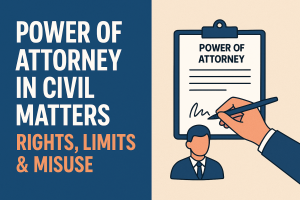Introduction
Land is one of the most valuable assets in India, and managing land-related matters is primarily a State subject under the Indian Constitution. In Gujarat, land revenue laws are governed by a dedicated legislation known as the Gujarat Land Revenue Code, 1879, which provides the framework for administration, assessment, collection, and dispute resolution related to land revenue. This code continues to serve as a cornerstone for rural and urban land management in the state.
Historical Background
The Bombay Land Revenue Code, 1879 originally governed large parts of western India, including Gujarat. After the formation of Gujarat in 1960, this law was adapted and renamed as the Gujarat Land Revenue Code, 1879. Over time, various amendments have been made to address evolving administrative and socio-economic needs.
Key Objectives of the Gujarat Land Revenue Code
1. Regulation of land records and registers
2. Assessment and collection of land revenue
3. Determination of occupancy rights and land tenure
4. Management of government lands and waste lands
5. Resolution of disputes related to land ownership and boundary
Key Provisions of the Gujarat Land Revenue Code
1. Classification of Land
ï Land is broadly classified as agricultural, non-agricultural, and government land (waste land).
- Conversion of land from agricultural to non-agricultural (NA) use requires permission from the Collector under Section 65 of the Code.
2. Occupancy Rights
ï The Code recognizes occupants as lawful holders of land, either of Class I (heritable and transferable) or Class II (limited rights).
- Unauthorized occupants of government land are subject to eviction under Section 61.
3. Assessment and Payment of Land Revenue
ï The Code empowers the government to assess land revenue periodically.
- Section 45 to 54 detail the method of assessment, payment, remission, and exemption of land revenue.
4. Maintenance of Land Records
ï The village officer or Talati-cum-Mantri is responsible for maintaining land records such as:
o 7/12 Extract (Satbara)
o Form 6 and Form 8A
o Village Form No. 1 (VF-1)
- Mutation entries are governed by Section 135D and require verification and sanction.
5. Appeals and Revision
ï Revenue hierarchy is established from Talati → Circle Inspector → Mamlatdar → Deputy Collector → Collector → Commissioner → Revenue Tribunal.
- Appeals and revisions against lower authority orders can be filed under Section 203 to 208.
6. Encroachment and Eviction
ï Section 61 allows summary eviction of unauthorised occupants of government land.
ï Encroachments are penalised and structures may be demolished following legal procedure.
Administrative Structure of Land Revenue in Gujarat
The administration is organised as follows:
| Authority | Role & Function |
| Talati-cum-Mantri | Maintains village-level records, collects land revenue |
| Circle Officer | Supervises Talatis, mutation approval |
| Mamlatdar | First appellate authority, handles disputes and surveys |
| Deputy Collector | Supervises revenue circles and hearing of appeals |
| Collector | Head of district revenue matters, land allotments, conversions |
| Revenue Tribunal | Final authority for revenue appeals under the Code |
Digitisation and Modernisation
Gujarat has taken significant steps under the Digital India Land Records Modernization Programme (DILRMP):
- Online access to 7/12 extracts and mutation status
- Integrated land information through Any ROR portal (https://anyror.gujarat.gov.in)
- Digitized cadastral maps and land surveys
Common Legal Issues and Remedies
- Delay in mutation entries
2. Wrong classification of land
3. Disputes over NA permission
4. Eviction notices from government land
Remedy: File representations before the Mamlatdar or appeal to the Collector/Revenue Tribunal.
Conclusion
The Gujarat Land Revenue Code serves as a crucial framework for land administration in the state. From protecting occupancy rights to ensuring efficient land revenue collection, the Code empowers both government and citizens with clarity and legal structure. With digitisation initiatives, transparency and access to land records have significantly improved, making the system more citizen-friendly and efficient.



